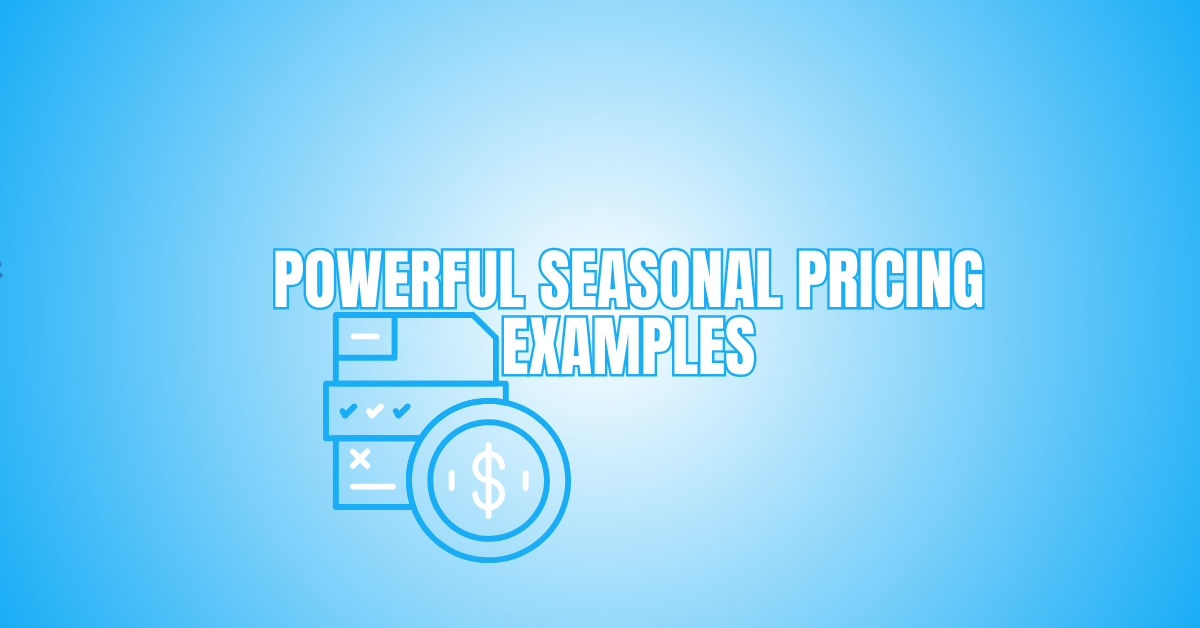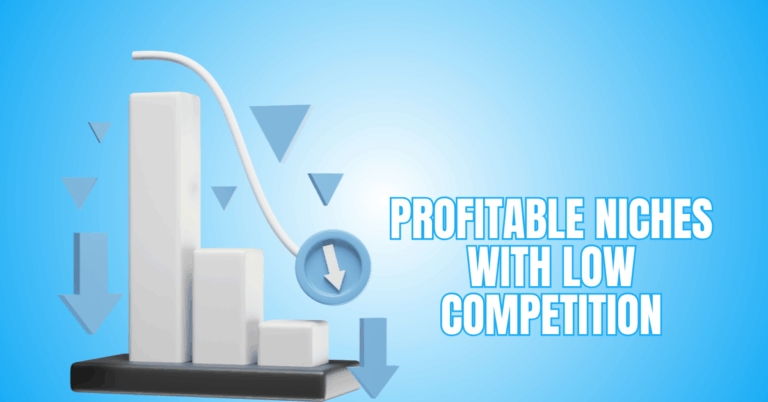Powerful Seasonal Pricing Examples That Drive Growth
Seasonal pricing examples show how businesses adjust prices to match customer demand during different times of the year. From holiday discounts to peak-season markups, these strategies help companies attract more buyers and boost profits.
Understanding how seasonal pricing works can give you a competitive edge. In this blog, we’ll explore inspiring seasonal pricing examples that you can apply to grow your own business successfully.
What Is Seasonal Pricing?
Seasonal pricing is a strategy where businesses adjust their prices according to demand patterns at different times of the year. Instead of sticking to one fixed rate, companies increase prices during peak seasons when demand is high and lower them during slower months to encourage sales.
For example, ski resorts raise ticket prices in winter, flower shops charge more around Valentine’s Day, and airlines increase fares during holiday travel.
This pricing approach helps balance supply and demand, maximize revenue, and stay competitive. It’s about smart timing, customer psychology, and ensuring both business and customer needs are met.
Seasonal Pricing Examples
1. Retail
In retail, seasonal pricing is everywhere. Clothing stores raise prices when a new season’s collection launches, then slash them during clearance sales.
For example, summer fashion may debut at full price in May, but by July, retailers offer 30–50% discounts to make room for autumn arrivals.
Customers expect these cycles, which keep sales flowing. Holiday sales like Black Friday and post-Christmas discounts also reflect seasonal pricing.
It not only clears inventory but also builds customer loyalty, as shoppers look forward to these predictable deals year after year. Retailers thrive by aligning pricing with customer buying patterns.
2. Travel And Hospitality
Seasonal pricing is most prominent in the travel industry. Airlines and hotels adjust prices based on predictable demand surges tied to holidays, school breaks, and weather.
For example, a flight to a popular beach destination like Cancún is significantly more expensive during the Christmas holidays or Spring Break than it is in the off-season month of October.
This is a direct response to consumer behaviour. According to travel data from Hopper, a flight booking app, airfare for major holidays like Christmas can be 40-75% higher than fares just a few weeks before or after.
This strategy, known as yield management, allows companies to maximize revenue when demand is high and attract budget-conscious travellers with lower prices when demand is low.
3. Food & Beverages
Food and beverage businesses also rely on seasonal pricing. Ice cream shops often increase prices in the summer when demand peaks and cut them during winter to encourage occasional purchases.
Coffee shops, on the other hand, promote seasonal drinks like pumpkin spice lattes in autumn or peppermint mochas in winter at slightly higher prices. Restaurants may also run special holiday menus at premium pricing because of the festive atmosphere.
Supermarkets adjust produce prices too—watermelons cost less in summer when supply is abundant, but rise in winter when imported. Seasonal pricing ensures profitability while aligning with customer cravings.
4. Wedding Venues And Services
The wedding industry operates on a distinct peak season, typically from late spring to early fall (May to October), when the weather is most favourable.
Venues, caterers, and photographers often charge a significant premium for their services during these popular months.
For example, renting a wedding venue on a Saturday in June could cost 25-50% more than the exact same rental package in January or March. Data from wedding planning sites like
The Knot shows that nearly 80% of couples choose a wedding date within this peak season, creating intense competition for resources and allowing vendors to implement a seasonal pricing structure to balance demand and maximize profit.
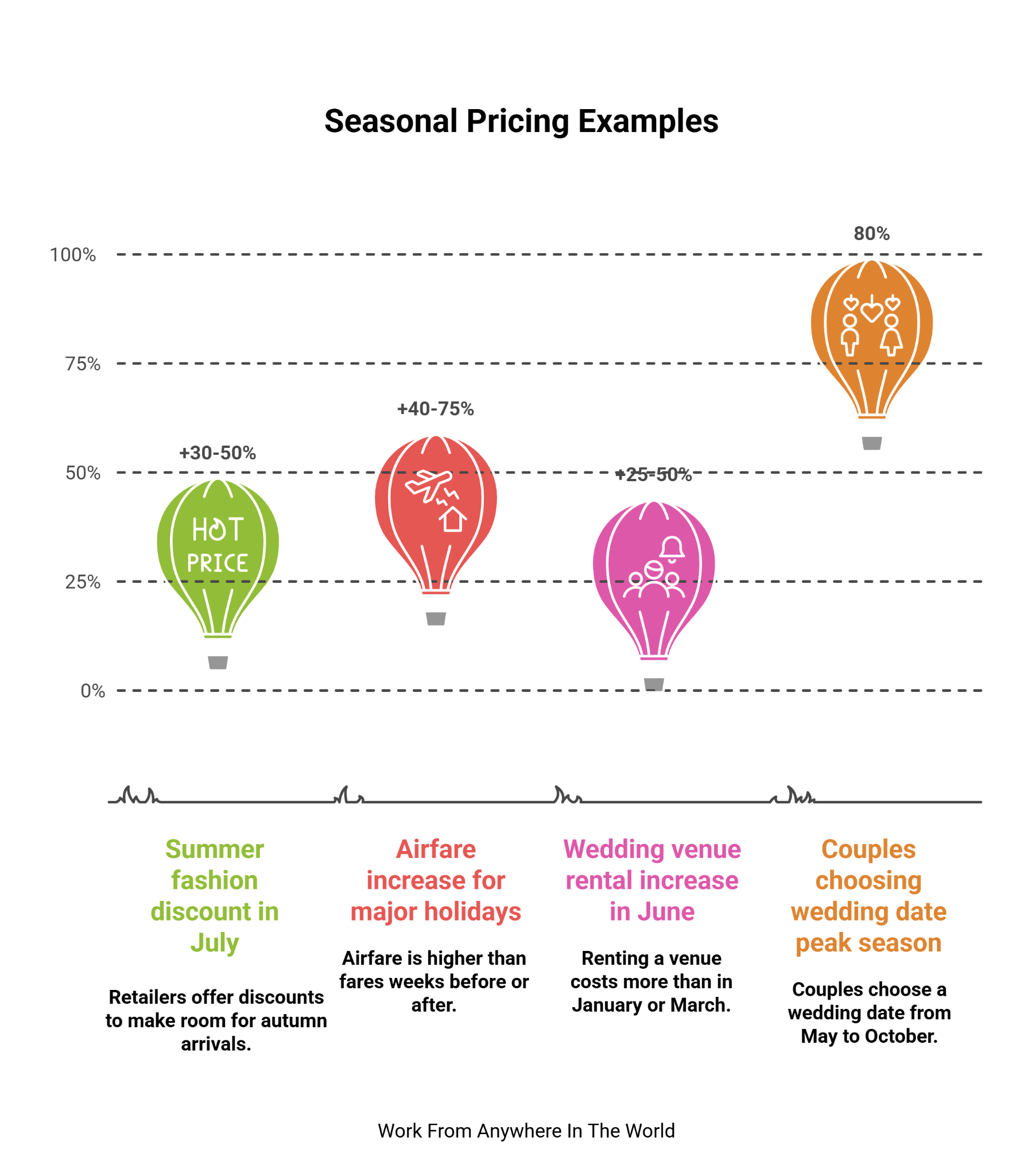
5. Home And Garden Supplies
Retailers in the home and garden sector adjust prices based on the seasons for outdoor living. Products like lawnmowers, patio furniture, and barbecue grills are sold at full price in the spring and early summer when demand is at its highest.
As summer ends, retailers need to clear floor space for autumn and winter products like snow blowers and holiday decorations. Consequently, starting in late August, these summer items are heavily discounted.
Market data shows that lawn and garden sales can increase by over 200% in the second quarter (April-June), prompting retailers to offer discounts of 40-60% on remaining stock during end-of-season clearance events.
6. eCommerce
Online retailers thrive on seasonal pricing strategies. Platforms like Amazon, Walmart, and small e-commerce stores use major sales events—Black Friday, Cyber Monday, and holiday promotions—to offer deep discounts.
For example, a laptop might cost $1,000 in October but drop to $799 during Cyber Monday, creating urgency and boosting sales.
Sellers also use limited-time deals during back-to-school or Mother’s Day. E-commerce businesses leverage dynamic pricing tools to adjust rates instantly, keeping offers competitive.
These promotions are heavily marketed with email campaigns and social ads, creating buzz. Seasonal pricing online drives customer traffic, clears inventory, and builds long-term brand engagement.
Wealthy Affiliate – Mini Review (2025)
If you’ve ever thought about turning your blog, passion, or niche into an online business,
Wealthy Affiliate (WA) is one of the most beginner-friendly platforms I’ve used.
It combines step-by-step training, website hosting, SEO research tools,
and an active community all in one place.
What I like most: you can start free (no credit card needed),
explore lessons, test the tools, and connect with other entrepreneurs
before upgrading. WA isn’t a “get rich quick” scheme —
It’s a platform where success comes from consistent effort and applying what you learn.
7. Agriculture And Produce
The price of fresh fruits and vegetables is directly linked to their natural growing seasons. When a product is “in season,” its supply is abundant, leading to lower production and transportation costs, which translates to lower prices for consumers.
For instance, strawberries are at their cheapest and freshest in the United States during their peak growing season from April to June. According to USDA data, the average retail price for a pound of strawberries during this period can be as low as $2.50.
In contrast, during the off-season in December, when supply is limited and relies on imports, the price can surge to over $4.50 per pound, an increase of over 80%.
8. Fitness And Gym Memberships
The fitness industry experiences a predictable surge in demand every January, driven by New Year's resolutions. Gyms capitalize on this by adjusting their pricing and promotional strategies.
While they may offer deep discounts in December to secure early commitments, prices often stabilize or increase for new sign-ups in January when motivation is highest.
For example, a gym might waive its initiation fee in December but charge the full fee in January. This allows them to maximize revenue during this peak period of inelastic demand.
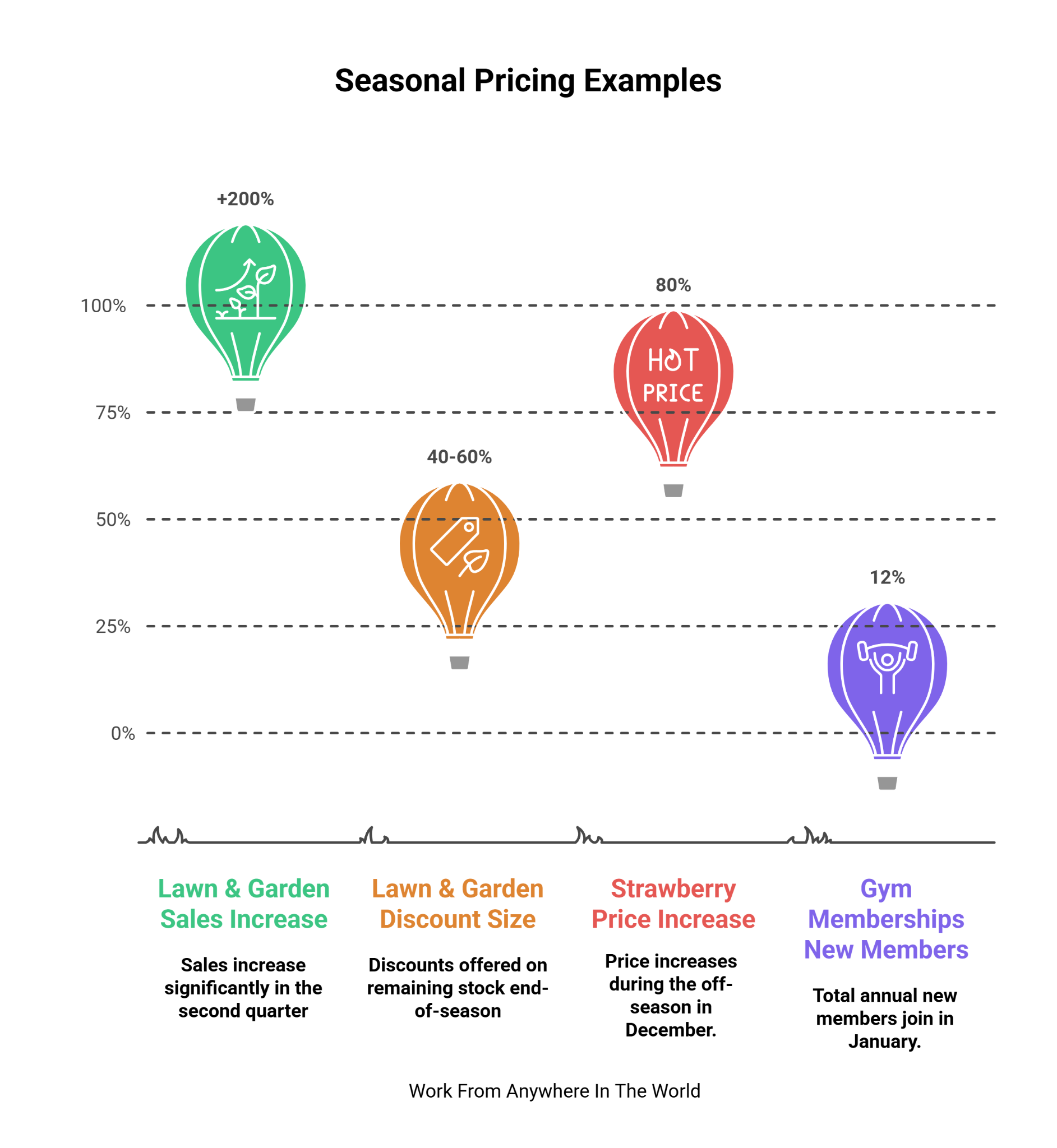
How To Implement Seasonal Pricing
Seasonal pricing means adjusting prices based on demand during different times of the year. It helps businesses boost profits, attract customers, and stay competitive with innovative, timely strategies.
1. Study Demand Patterns
Study demand patterns by digging into your sales history and external signals. Gather weekly or monthly sales for at least a year and map spikes to holidays, weather, school calendars, and local events.
Use moving averages to remove noise and identify real trends—interview staff and suppliers to capture qualitative clues. Create a visual demand calendar that flags high, medium, and low months.
Run small pricing tests in one region or product line before scaling company-wide. Example: a bakery analyzes three years of orders, spots a Mother’s Day spike, then raises cupcake prices for that week while offering pre-order discounts.
2. Segment Customers
Segment customers into clear groups based on behaviour and price sensitivity. Use RFM (recency, frequency, monetary) analysis or simple purchase-history buckets to classify loyal, occasional, and bargain shoppers.
Build personas for each segment and map preferred channels, price triggers, and product affinities. Design targeted pricing: loyalty discounts for repeat buyers, early-bird rates for planners, and flash deals for bargain hunters.
Personalized messaging increases conversion while protecting margins. Example: a boutique hotel creates corporate and leisure segments, offers weekday corporate rates and weekend leisure packages, and sends tailored emails to each group. Also run surveys and A/B tests to refine segments.
3. Analyze Competitors
Analyze competitors to understand seasonal pricing boundaries and opportunities. Track advertised rates, promotions, bundled offers, and included services across seasons.
Use price-tracking tools, mystery shopping, and industry reports to spot patterns and timing. Map competitor capacity and occupancy to identify safe windows for price increases or chances to undercut with value-added offers.
Decide when to match prices, differentiate with extras, or avoid entering destructive price wars. Example: a ski resort monitors nearby lift-ticket tiers, then adds free shuttle and hot cocoa to justify a slightly higher peak price instead of lowering rates. Keep a simple tracker to review regularly.
4. Choose Your Strategy
Choose a seasonal pricing strategy that fits your product lifecycle, margins, and customer segments. Standard options include peak pricing, off-peak discounts, bundles, early-bird and last-minute models, or fully dynamic pricing.
Build revenue scenarios for conservative, moderate, and aggressive price moves to understand the range of outcomes—set guardrails—caps on surge levels, minimum discount thresholds, and policies that preserve trust.
Ensure compliance with platform rules and local regulations before implementation. Example: an airline combines early-bird fares for planners with dynamic last-minute price tiers to balance occupancy and revenue across holiday travel peaks. Run reviews with finance and customer service to validate internally.
5. Plan Inventory & Staffing
Plan inventory and staffing to support your seasonal prices and expected demand. Start with demand forecasts tied to your pricing calendar, then calculate reorder points and safety stock based on lead times.
Negotiate flexible terms with suppliers or use local backup vendors to reduce risk. Hire seasonal or temporary staff early, cross-train core employees, and build shift schedules that match peak windows.
Include warehousing, transportation, and spoilage costs when setting seasonal margins. Example: an ice cream shop orders extra mix, rents temporary freezers, hires weekend staff for summer, and adjusts its summer price to cover higher labour and refrigeration costs.
6. Market Your Pricing
Market your seasonal pricing strategically so customers see value rather than confusion. Create segmented campaigns that target the right audience with appropriate channels: SMS for last-minute deals, email for loyal customers, and social ads for broad reach.
Use urgency tactics like countdown timers, limited quantities, or early-access windows, but remain transparent about terms. Align landing pages, product descriptions, and checkout messaging so prices and savings are apparent.
A/B test subject lines and CTAs to maximize conversion. Example: an online retailer runs VIP early access for subscribers, then launches a main sale with timed flash deals and clear savings badges. Regularly.
7. Track & Adjust
Track results closely and build a loop for continuous improvement. Define KPIs such as conversion rate, average order value, margin, revenue per available unit, and net promoter score.
Set dashboards with near-real-time feeds and alert thresholds for unexpected drops or spikes. Run controlled experiments and holdout tests to isolate pricing effects from marketing or seasonality.
Document all changes and outcomes in a seasonal playbook for future reference and training. Example: a restaurant tests a weekend prix-fixe price, tracks reservation fill rates, adjusts menu pricing mid-season, and measures guest satisfaction. Also, gather customer feedback and monitor competitors during the season closely.
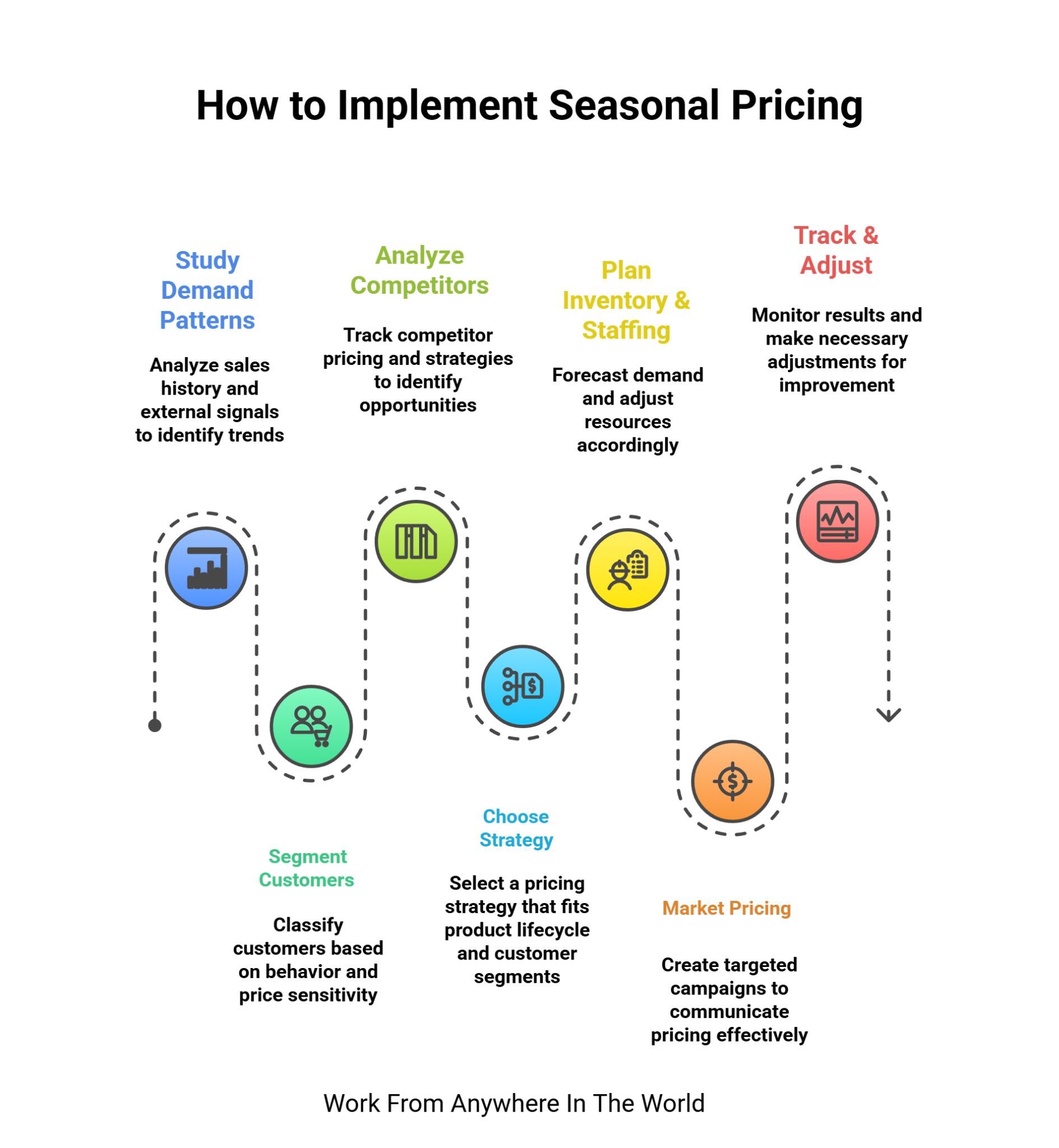
Digital Tools for Seasonal Pricing
Digital tools make seasonal pricing smarter, faster, and more accurate. From automation to AI, these platforms help businesses track demand, set prices, and maximize profits effortlessly.
1. Dynamic Pricing Software
Dynamic pricing software automatically adjusts prices based on demand, competitor activity, and inventory. It uses algorithms to track market conditions and applies changes in real time.
Tools like Prisync or Pricefx integrate with e-commerce stores to update prices instantly across product catalogues. This ensures you’re always competitive without manual intervention. Most software offers dashboards with analytics to measure profit impact.
Pricing for these tools typically starts at around $49/month for small businesses and scales up based on product volume or features. They’re best for e-commerce, retail, and travel businesses that face rapid shifts in seasonal demand.
2. eCommerce Platforms With Seasonal Discount Features
Platforms like Shopify, WooCommerce, and BigCommerce provide built-in features or apps to schedule seasonal discounts and sales. Businesses can set automatic start and end dates for promotions, apply coupons, or create flash sales.
These platforms allow tagging seasonal collections (like “Holiday Sale” or “Back-to-School”) to simplify customer navigation. Advanced apps can even adjust pricing based on customer groups.
Shopify’s basic plan starts at $39/month, WooCommerce is free but requires paid extensions, and BigCommerce begins at $29/month.
These tools are especially useful for small retailers and online sellers who want simple, automated seasonal pricing without heavy technical setups.
3. Analytics Tools
Analytics tools like Google Analytics, Hotjar, or Mixpanel track customer behaviour and seasonal buying patterns. They don’t directly adjust prices but provide insights to guide seasonal pricing strategies.
Businesses can see when traffic spikes, which products trend during holidays, and where customers drop off. This data helps optimize discount timing and price points.
Google Analytics is free, while premium options like GA 360 cost thousands annually. Hotjar starts at $32/month, and Mixpanel offers free tiers with upgrades starting at $20/month.
These tools are essential for spotting demand cycles and testing whether seasonal pricing changes are driving conversions effectively.
4. Email Marketing Tools
Email marketing tools such as Mailchimp, Klaviyo, and ConvertKit allow businesses to promote seasonal prices effectively.
They work by segmenting audiences, automating seasonal campaigns, and personalizing messages based on purchase history.
Features like countdown timers, urgency subject lines, and pre-set campaign templates make them perfect for holiday promotions.
Mailchimp offers a free tier, with paid plans starting at $13/month. Klaviyo, often used by e-commerce brands, begins at $20/month depending on list size.
ConvertKit starts at around $15/month. While they don’t change product prices directly, they amplify seasonal strategies by communicating offers at the right time to the right audience.
5. Competitor Price Tracking Tools
Competitor tracking tools like Price2Spy or Dataweave monitor rival prices in real time and send alerts when competitors adjust their seasonal rates.
They scan e-commerce sites, marketplaces, and even ads to capture pricing data. This helps businesses stay competitive during peak shopping periods like Black Friday or Valentine’s Day.
Users can set rules to adjust their own prices when competitors change theirs automatically. Price2Spy starts at $39.95/month, while enterprise-level solutions can cost hundreds per month depending on volume.
These tools are especially valuable in industries where customers compare prices quickly, such as electronics, apparel, and travel.
6. AI-Powered Predictive Pricing Tools
AI-powered pricing engines such as BlackCurve or Intelligencenode use machine learning to forecast seasonal demand and suggest optimal price points.
They analyze historical sales, competitor data, weather, and even social media trends to predict when demand will spike. This helps businesses set prices in advance rather than reacting late.
Some platforms also provide automated repricing options that align with revenue goals. Pricing starts at around $200–$500/month for small businesses and can scale into enterprise contracts.
These tools are ideal for retailers and e-commerce brands that want to maximize profits while staying ahead of customer expectations during seasonal events.

Conclusion
Seasonal pricing examples highlight the power of timing in boosting sales and building stronger customer connections. By adjusting prices smartly, businesses can increase revenue, manage inventory, and create memorable shopping experiences.
Whether it’s discounts during holidays or premium pricing in peak demand, the right approach can work wonders. Use these seasonal pricing examples as inspiration to craft strategies that keep your business thriving all year long.
I trust you enjoyed this article on the Powerful Seasonal Pricing Examples That Drive Growth. Please stay tuned for more insightful blogs on affiliate marketing, online business, and working from anywhere in the world.
Take care!
— JeannetteZ
💬 Your Opinion Is Important To Me
Do you have thoughts, ideas, or questions? I’d love to hear from you. Please leave your comments below or email me directly at Jeannette@WorkFromAnywhereInTheWorld.com.
📚 More Work From Anywhere Reads
🚀 Ready to Build a Business You Can Run from Home
or from Anywhere in the World?
Imagine creating income on your terms — from home, a cozy café, or wherever life takes you.
With the right tools, training, and community support, it’s entirely possible.
Start your own online business for free — no credit card needed.
Disclosure
This post may contain affiliate links. As an Amazon Associate and participant in other affiliate programs, I earn from qualifying purchases at no extra cost to you. Please read my full affiliate disclosure.

